A panel of experts convened by the US Food and Drug Administration (FDA) on Wednesday unanimously recommended COVID-19 vaccines for children younger than five, the final age group awaiting immunization in most countries.
Formal authorizations for Moderna and Pfizer should follow soon, with the first shots in arms expected early next week, just more than a year and a half after the first COVID-19 vaccines were greenlighted for elderly people in December 2020.
In Taipei, the Central Epidemic Command Center (CECC) yesterday said that the nation’s Food and Drug Administration is considering granting emergency use authorization (EUA) to the Moderna COVID-19 vaccine for ages six months to five years.
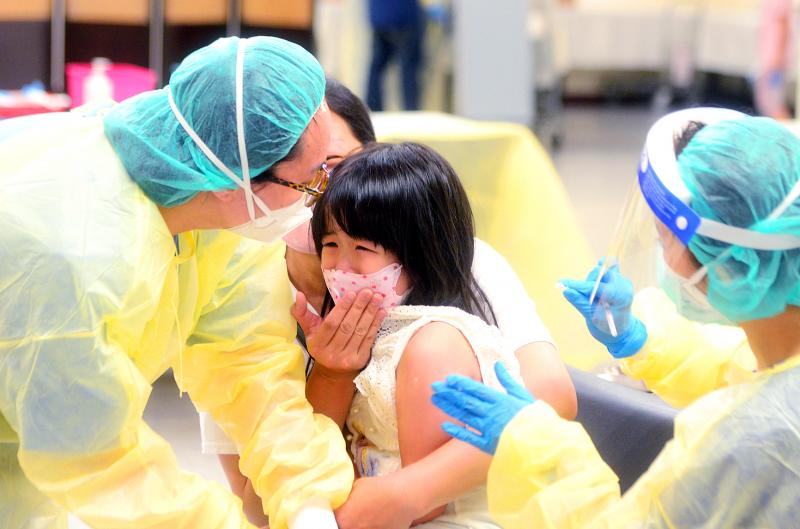
Photo: Wang Yi-sung, Taipei Times
If approved, the center would ask the Advisory Committee on Immunization Practices to discuss the issue, said Centers for Disease Control Deputy Director-General Philip Lo (羅一鈞), deputy head of the CECC’s medical response division.
Unlike regulators in other countries, the US FDA offers livestreams of its internal deliberations and its stamp of approval is considered the global gold standard.
Opening the discussion, senior FDA scientist Peter Marks said that despite studies showing that the majority of children have now been infected with COVID-19, the high rate of hospitalizations among infants, toddlers and young children during last winter’s Omicron wave of SARS-CoV-2 underscored an urgent need for vaccination.
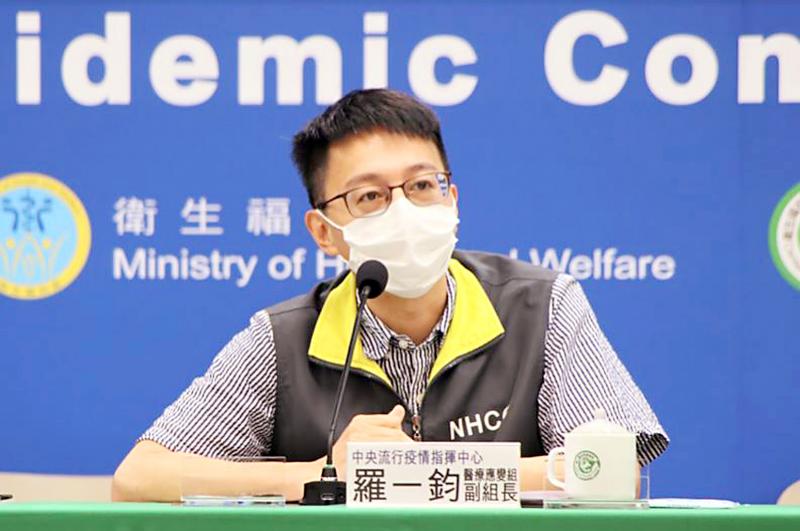
Photo courtesy of the CECC
“We are dealing with an issue where we have to be careful we don’t become numb to the pediatric deaths because of the overwhelming number of older deaths,” he said.
“Every life is important and vaccine-preventable deaths are something we would like to try to do something about,” he said.
The US has recorded 480 COVID-19 deaths in the 0-to-4 age group in the COVID-19 pandemic — far higher than even a bad flu season, Marks said.
As of last month, there had been 45,000 hospitalizations in that group, nearly one-quarter of which required intensive care.
Ahead of the meeting, the FDA posted its independent analyses of the pharmaceutical firms’ vaccines, deeming both safe and effective.
Both vaccines are based on messenger RNA, which delivers genetic code for the coronavirus spike protein to human cells that then grow it on their surface, training the immune system to be ready.
Pfizer sought authorization for three doses at 3 micrograms given to children aged six months to four years, while Moderna asked for the FDA to authorize its vaccine as two doses of a higher 25 micrograms for ages six months to five years.
Both vaccines were tested in trials of thousands of children. They were found to cause similar levels of mild side effects as in older age groups and triggered similar levels of antibodies.
There are about 20 million US children aged four years and under. Although obesity, neurological disorders and asthma are associated with increased risk of severe disease among young children, it is not easy to predict severe outcomes. Data show that 64 percent of hospitalizations in those under five occurred in patients without comorbidities.
Children can also go on to contract multisystem inflammatory syndrome in children (MIS-C), a rare, but serious post-viral condition. About 3 to 6 percent can experience long COVID symptoms for more than 12 weeks.
The FDA is expected to soon act on the panel’s recommendation, and the matter will go to the US Centers for Disease Control and Prevention for a final say.
White House officials last week said the rollout of 10 million shots at pharmacies and doctors’ offices could begin as soon as Tuesday next week.
Taiwan’s FDA on April 17 issued an EUA for Moderna, at 50 micrograms per dose, for children aged six to 11, and on April 21 issued an EUA for the Pfizer-
BioNTech COVID-19 vaccine, at 10 micrograms per dose, for children aged five to 11.
Inoculations of children aged six to 11 with the Moderna vaccine began on May 2, followed by the Pfizer-BioNTech vaccine on May 25.
Additional reporting by By Wu Liang-yi and Jake Chung
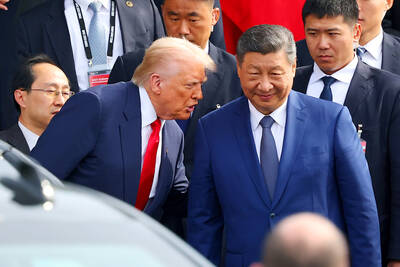
UKRAINE, NVIDIA: The US leader said the subject of Russia’s war had come up ‘very strongly,’ while Jenson Huang was hoping that the conversation was good Chinese President Xi Jinping (習近平) and US President Donald Trump had differing takes following their meeting in Busan, South Korea, yesterday. Xi said that the two sides should complete follow-up work as soon as possible to deliver tangible results that would provide “peace of mind” to China, the US and the rest of the world, while Trump hailed the “great success” of the talks. The two discussed trade, including a deal to reduce tariffs slapped on China for its role in the fentanyl trade, as well as cooperation in ending the war in Ukraine, among other issues, but they did not mention
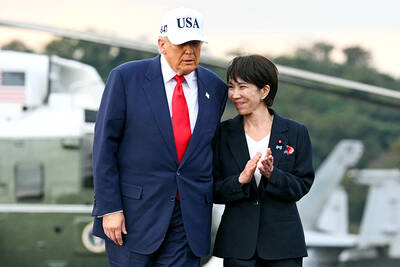
Japanese Prime Minister Sanae Takaichi yesterday lavished US President Donald Trump with praise and vows of a “golden age” of ties on his visit to Tokyo, before inking a deal with Washington aimed at securing critical minerals. Takaichi — Japan’s first female prime minister — pulled out all the stops for Trump in her opening test on the international stage and even announced that she would nominate him for a Nobel Peace Prize, the White House said. Trump has become increasingly focused on the Nobel since his return to power in January and claims to have ended several conflicts around the world,

CALL FOR SUPPORT: President William Lai called on lawmakers across party lines to ensure the livelihood of Taiwanese and that national security is protected President William Lai (賴清德) yesterday called for bipartisan support for Taiwan’s investment in self-defense capabilities at the christening and launch of two coast guard vessels at CSBC Corp, Taiwan’s (台灣國際造船) shipyard in Kaohsiung. The Taipei (台北) is the fourth and final ship of the Chiayi-class offshore patrol vessels, and the Siraya (西拉雅) is the Coast Guard Administration’s (CGA) first-ever ocean patrol vessel, the government said. The Taipei is the fourth and final ship of the Chiayi-class offshore patrol vessels with a displacement of about 4,000 tonnes, Lai said. This ship class was ordered as a result of former president Tsai Ing-wen’s (蔡英文) 2018
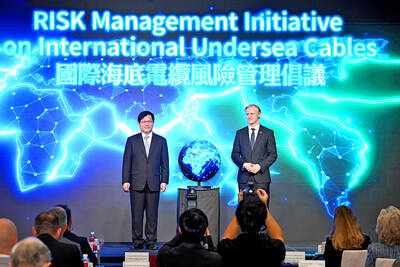
GLOBAL PROJECT: Underseas cables ‘are the nervous system of democratic connectivity,’ which is under stress, Member of the European Parliament Rihards Kols said The government yesterday launched an initiative to promote global cooperation on improved security of undersea cables, following reported disruptions of such cables near Taiwan and around the world. The Management Initiative on International Undersea Cables aims to “bring together stakeholders, align standards, promote best practices and turn shared concerns into beneficial cooperation,” Minister of Foreign Affairs Lin Chia-lung (林佳龍) said at a seminar in Taipei. The project would be known as “RISK,” an acronym for risk mitigation, information sharing, systemic reform and knowledge building, he said at the seminar, titled “Taiwan-Europe Subsea Cable Security Cooperation Forum.” Taiwan sits at a vital junction on